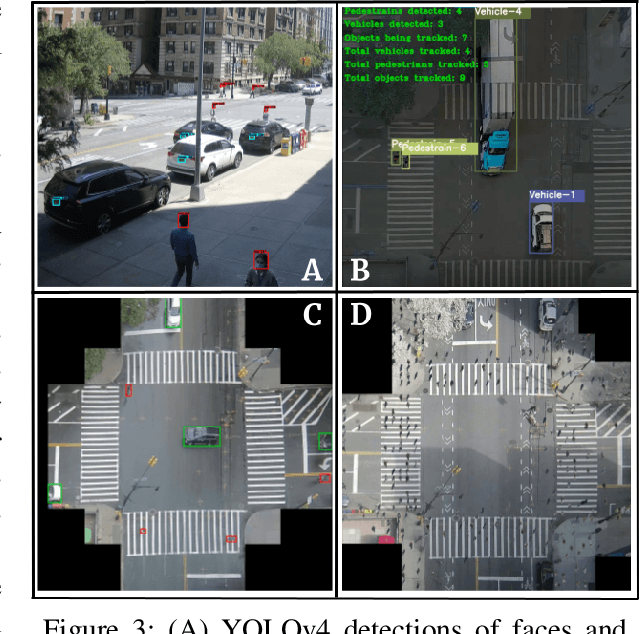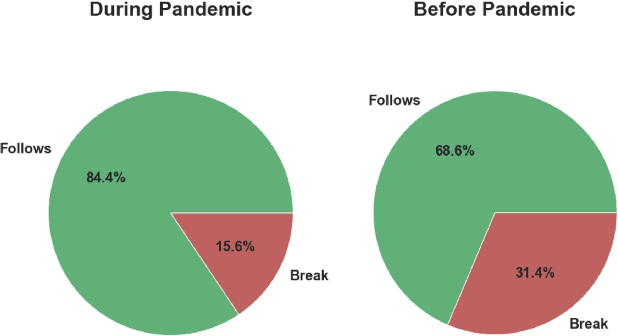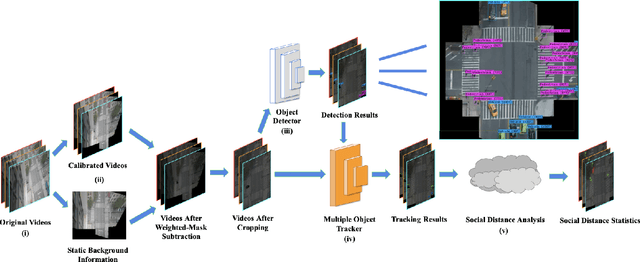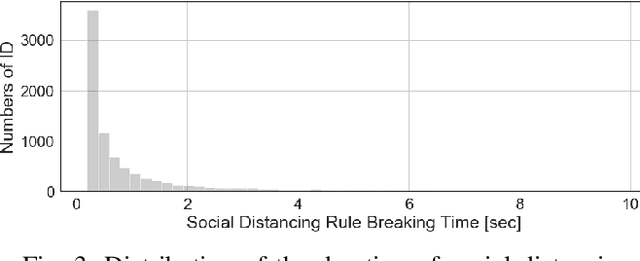Zhengye Yang
Detecting Contextual Anomalies by Discovering Consistent Spatial Regions
Jan 14, 2025Abstract:We describe a method for modeling spatial context to enable video anomaly detection. The main idea is to discover regions that share similar object-level activities by clustering joint object attributes using Gaussian mixture models. We demonstrate that this straightforward approach, using orders of magnitude fewer parameters than competing models, achieves state-of-the-art performance in the challenging spatial-context-dependent Street Scene dataset. As a side benefit, the high-resolution discovered regions learned by the model also provide explainable normalcy maps for human operators without the need for any pre-trained segmentation model.
Large Language Models for Automatic Milestone Detection in Group Discussions
Jun 16, 2024Abstract:Large language models like GPT have proven widely successful on natural language understanding tasks based on written text documents. In this paper, we investigate an LLM's performance on recordings of a group oral communication task in which utterances are often truncated or not well-formed. We propose a new group task experiment involving a puzzle with several milestones that can be achieved in any order. We investigate methods for processing transcripts to detect if, when, and by whom a milestone has been completed. We demonstrate that iteratively prompting GPT with transcription chunks outperforms semantic similarity search methods using text embeddings, and further discuss the quality and randomness of GPT responses under different context window sizes.
Context-aware Video Anomaly Detection in Long-Term Datasets
Apr 11, 2024



Abstract:Video anomaly detection research is generally evaluated on short, isolated benchmark videos only a few minutes long. However, in real-world environments, security cameras observe the same scene for months or years at a time, and the notion of anomalous behavior critically depends on context, such as the time of day, day of week, or schedule of events. Here, we propose a context-aware video anomaly detection algorithm, Trinity, specifically targeted to these scenarios. Trinity is especially well-suited to crowded scenes in which individuals cannot be easily tracked, and anomalies are due to speed, direction, or absence of group motion. Trinity is a contrastive learning framework that aims to learn alignments between context, appearance, and motion, and uses alignment quality to classify videos as normal or anomalous. We evaluate our algorithm on both conventional benchmarks and a public webcam-based dataset we collected that spans more than three months of activity.
Smart City Intersections: Intelligence Nodes for Future Metropolises
May 13, 2022



Abstract:Traffic intersections are the most suitable locations for the deployment of computing, communications, and intelligence services for smart cities of the future. The abundance of data to be collected and processed, in combination with privacy and security concerns, motivates the use of the edge-computing paradigm which aligns well with physical intersections in metropolises. This paper focuses on high-bandwidth, low-latency applications, and in that context it describes: (i) system design considerations for smart city intersection intelligence nodes; (ii) key technological components including sensors, networking, edge computing, low latency design, and AI-based intelligence; and (iii) applications such as privacy preservation, cloud-connected vehicles, a real-time "radar-screen", traffic management, and monitoring of pedestrian behavior during pandemics. The results of the experimental studies performed on the COSMOS testbed located in New York City are illustrated. Future challenges in designing human-centered smart city intersections are summarized.
Birds Eye View Social Distancing Analysis System
Dec 14, 2021



Abstract:Social distancing can reduce the infection rates in respiratory pandemics such as COVID-19. Traffic intersections are particularly suitable for monitoring and evaluation of social distancing behavior in metropolises. We propose and evaluate a privacy-preserving social distancing analysis system (B-SDA), which uses bird's-eye view video recordings of pedestrians who cross traffic intersections. We devise algorithms for video pre-processing, object detection and tracking which are rooted in the known computer-vision and deep learning techniques, but modified to address the problem of detecting very small objects/pedestrians captured by a highly elevated camera. We propose a method for incorporating pedestrian grouping for detection of social distancing violations. B-SDA is used to compare pedestrian behavior based on pre-pandemic and pandemic videos in a major metropolitan area. The accomplished pedestrian detection performance is $63.0\%$ $AP_{50}$ and the tracking performance is $47.6\%$ MOTA. The social distancing violation rate of $15.6\%$ during the pandemic is notably lower than $31.4\%$ pre-pandemic baseline, indicating that pedestrians followed CDC-prescribed social distancing recommendations. The proposed system is suitable for deployment in real-world applications.
 Add to Chrome
Add to Chrome Add to Firefox
Add to Firefox Add to Edge
Add to Edge